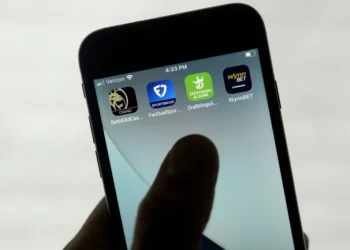Samsung Unveils Galaxy Z Fold 7 and Flip 7, Betting Big on Foldables as Apple Lags Behind
SEOUL, South Korea — Samsung has launched its latest line of foldable smartphones, doubling down on a product category it pioneered and that remains one of the few areas where Apple has yet to compete.
On Wednesday, Samsung introduced three new devices: the $2,000 Galaxy Z Fold 7, the $1,100 Galaxy Z Flip 7, and the more affordable $900 Galaxy Z Flip 7 FE. Preorders began July 9, with official sales set for July 25.
The company hopes its upgraded lineup — featuring slimmer builds, larger screens, and improved AI integration — will help foldables transition from niche to mainstream.
Samsung Sharpens Its Edge in the Premium Market
While Apple dominates global premium smartphone sales, Samsung is positioning its foldable lineup as the cutting-edge alternative. Despite persistent rumors of a foldable iPhone, Apple has not confirmed plans to enter the space. Analysts expect a potential Apple foldable no earlier than 2026.
“Now, with the launch of the Fold 7 and Flip 7, we believe we’re nearing the tipping point of going mainstream,” said Won-joon Choi, COO of Samsung’s mobile experience division, in an interview with CNN.
Samsung has led the foldable market since launching its first device in 2019. The category, however, still makes up less than 2% of the global smartphone market, according to IDC and Counterpoint Research. Even so, total foldable shipments are projected to reach 45.7 million units by 2028, far behind the 1.2 billion smartphones shipped in 2024.
What’s New in the Fold 7 and Flip 7
Samsung’s new foldables aim to reduce bulk while enhancing usability:
- Galaxy Z Fold 7: Now lighter than the Galaxy S25 Ultra, it features an expanded 8-inch internal screen, up from 7.6 inches in the previous model.
- Galaxy Z Flip 7: Boasts a larger 4.1-inch cover screen and an improved 6.9-inch internal display, offering a more traditional smartphone feel when open.
- Galaxy Z Flip 7 FE: A budget-friendly model with a similar design to older flip phones and an older processor.
For the first time, Samsung is using two different processors across the lineup — a Qualcomm chip for the Fold 7 and an Exynos chip for the Flip 7 — due to supply chain considerations.
Despite early expectations that foldables would decrease in cost over time, Samsung’s new Fold 7 is actually $100 more expensive than last year’s version. The company attributes the hike to upgraded hardware and design refinements.
Foldables May Be Small in Volume — But Big in Profit
According to IDC analyst Francisco Jeronimo, Samsung and its rivals are realizing that they don’t need to sell massive volumes of foldables to generate strong revenue.
“They are not really pushing prices down,” Jeronimo said. “They realized that despite shipping small volumes, they are making decent money out of it.”
Foldables are also attracting users away from Apple. In Q1 2025, 8% of U.S. foldable buyers switched from iPhones, according to Consumer Intelligence Research Partners.
Samsung’s internal data backs this up. Choi noted that foldables have a higher brand-switching rate than traditional smartphones, suggesting their uniqueness is drawing users from both iOS and Android ecosystems.
Competition Heats Up — Especially in China
Samsung’s dominance is increasingly being challenged by Chinese brands like Huawei, Vivo, and Honor, which have carved out major market share in China — the world’s largest foldable market.
Just days before Samsung’s launch, Honor revealed its own ultra-slim foldable, the Magic V5. Huawei has already outpaced Samsung in innovation this year, releasing a dual-folding phone with a screen nearly the size of an iPad.
Samsung has shown prototypes of similar concepts at trade shows but hasn’t brought them to market — yet.
“We have a new style of device that can be brought to market in the near future,” Choi teased, without offering specifics.
Betting on AI to Shape the Smartphone’s Next Phase
Samsung is also integrating AI to boost the utility of its foldables. The company has worked with Google to optimize Gemini, Google’s AI assistant, for foldable screens. For the first time, Gemini Live is available on the Flip 7’s cover display, allowing for hands-free, conversational interactions.
On the Fold 7, Gemini can multitask across multiple windows — a feature Samsung believes enhances productivity and entertainment on the device’s tablet-like display.
Samsung is also exploring collaborations with other AI partners, though Choi declined to name them. Bloomberg recently reported the company is nearing a deal with AI search engine Perplexity.
Choi envisions a future where AI agents replace traditional apps, handling tasks like movie recommendations, recipe sharing, or vacation planning.
“I don’t think it’s 10 years away,” he said. “But it’s not six months either. Somewhere in between — and it’s going to happen.”
Final Thoughts
Samsung’s Fold 7 and Flip 7 lineup underscores the company’s commitment to driving innovation in a market dominated by familiar designs. With Apple still absent from the foldable space, Samsung is using this window to solidify its lead — even as rivals close in and consumer expectations shift toward smarter, more versatile devices.
As the company doubles down on foldables and AI, the next evolution of the smartphone may be just a few folds away.
This article was rewritten by JournosNews.com based on verified reporting from trusted sources. The content has been independently reviewed, fact-checked, and edited for accuracy, neutrality, tone, and global readability in accordance with Google News and AdSense standards.
All opinions, quotes, or statements from contributors, experts, or sourced organizations do not necessarily reflect the views of JournosNews.com. JournosNews.com maintains full editorial independence from any external funders, sponsors, or organizations.
Stay informed with JournosNews.com — your trusted source for verified global reporting and in-depth analysis. Follow us on Google News, BlueSky, and X for real-time updates.














